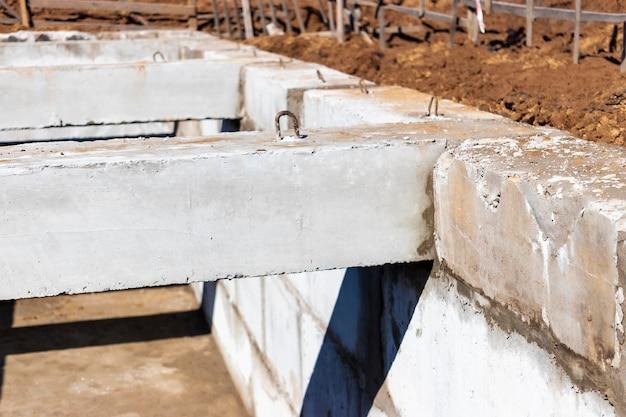Your home’s foundation is its backbone, providing stability and support to the entire structure. Over time, various factors like soil settlement, moisture levels, and natural wear and tear can lead to foundation issues. When these problems arise, addressing them promptly is crucial to prevent further damage. However, one of the primary concerns for homeowners facing foundation problems is the cost of repairs. In this article, we will delve into foundation repair costs and shed light on a cost-effective solution – helical piers.
Understanding Foundation Repair Costs
Foundation repair costs can vary significantly depending on several factors:
1. Extent of Damage:
The severity of the foundation damage plays a pivotal role in determining the overall cost. Minor cracks or settling issues may require less extensive repairs than major structural problems.
2. Foundation Type:
Different foundation types (e.g., slab, crawl space, or basement) require varying repair methods, and these methods can have different associated costs.
3. Repair Method:
The chosen repair method significantly impacts the cost. Common methods include slabjacking, piering, or using helical piers.
4. Labor and Material Costs:
Labor costs, as well as the materials needed for repairs, will influence the total expenditure. Labor costs can vary depending on location and the expertise of the contractor.
5. Property Accessibility:
If the foundation is challenging to access due to landscaping or structural obstacles, it can increase the labor hours and, consequently, the cost.
6. Additional Repairs:
In some cases, foundation issues may have caused damage to other parts of the house, such as walls, floors, or plumbing. Repairing these additional problems will add to the overall expense.
Helical Piers: A Cost-Effective Solution
One of the cost-effective solutions for foundation repair is the use of helical piers. Helical piers are steel shafts with helical blades that are twisted into the ground beneath your foundation to provide support. Here’s why they are gaining popularity as a cost-effective choice:
1. Minimal Labor Costs:
Helical pier installation requires less labor compared to traditional methods like concrete underpinning. This can result in significant cost savings.
2. Versatility:
Helical piers are suitable for a wide range of soil types and can be used for various foundation types, including slab and crawl space foundations.
3. Quick Installation:
The installation process is relatively quick, minimizing disruption to your daily life and reducing labor costs further.
Helical Piers Installation is a cost-effective solution that adds to the efficiency of this process. These piers are engineered to provide stability and support to structures, making them an ideal choice for various construction projects. With their easy installation and durability, helical piers offer a reliable foundation solution that not only saves time and labor during installation but also ensures long-term structural integrity.
4. No Concrete Curing Time:
Traditional methods often involve pouring concrete, which requires time to cure. Helical piers provide immediate support, saving both time and money.
5. Limited Excavation:
Helical piers can be installed with minimal excavation, reducing the cost associated with digging and backfilling.
6. Longevity:
Helical piers are durable and designed to last, providing a long-term solution to foundation issues, thus reducing the need for frequent repairs.
Cost Comparison: Helical Piers vs. Other Methods
To illustrate the cost-effectiveness of helical piers, let’s compare them to two common foundation repair methods: concrete piers and slabjacking.
1. Helical Piers vs. Concrete Piers:
Traditional concrete piers involve excavating around your foundation, pouring concrete, and waiting for it to cure. This process can be time-consuming and costly due to labor and materials. In contrast, helical piers require less excavation and no curing time, resulting in lower overall costs.
2. Helical Piers vs. Slabjacking:
Slabjacking involves injecting a slurry mixture under your foundation to lift it. While slabjacking can be cost-effective for minor issues, it may not provide a long-term solution for more severe problems. Helical piers, on the other hand, offer greater stability and durability, making them a better long-term investment.
Factors Affecting Helical Pier Costs
While helical piers are generally cost-effective, several factors can influence their specific costs:
1. Number of Piers:
The number of piers required depends on the extent of foundation damage. More piers will naturally increase the overall cost.
2. Depth:
The depth to which the helical piers must be installed can affect costs. Deeper installations may require longer piers and additional materials.
3. Soil Conditions:
Soil type and condition can impact installation difficulty. More challenging soil conditions may necessitate specialized equipment and increase costs.
4. Foundation Type:
Different foundation types may require varying pier configurations, affecting the overall cost.
Conclusion
Foundation repair costs can be a source of anxiety for homeowners, but addressing foundation issues promptly is essential to prevent further damage. Helical piers offer a cost-effective and efficient solution for foundation repair. Their minimal labor requirements, quick installation, and long-term durability make them an attractive option. While the cost of helical piers can vary based on factors like the extent of damage, soil conditions, and foundation type, they often prove to be more economical than traditional repair methods like concrete piers or slabjacking. Investing in helical piers not only saves you money in the short term but also provides a stable, long-lasting foundation for your home. When faced with foundation problems, consult with a professional contractor to assess your specific needs and determine the most cost-effective solution for your situation.



















